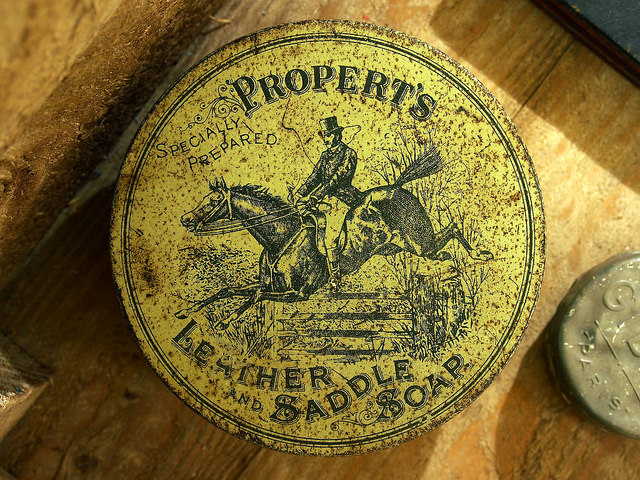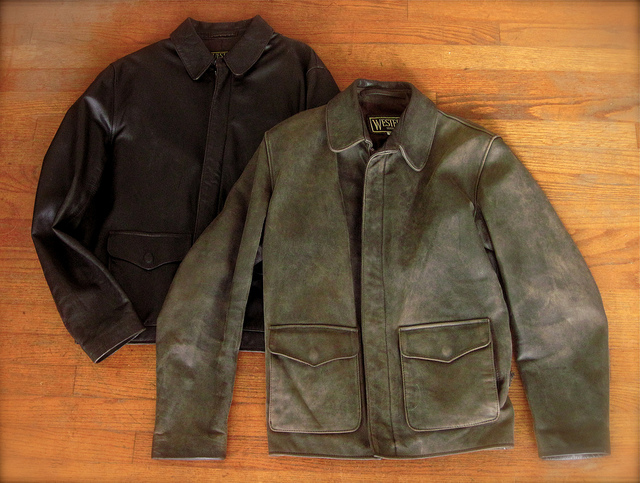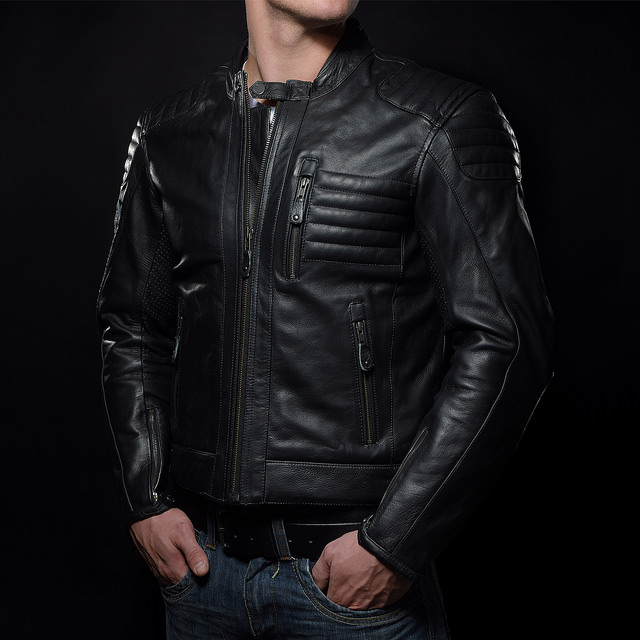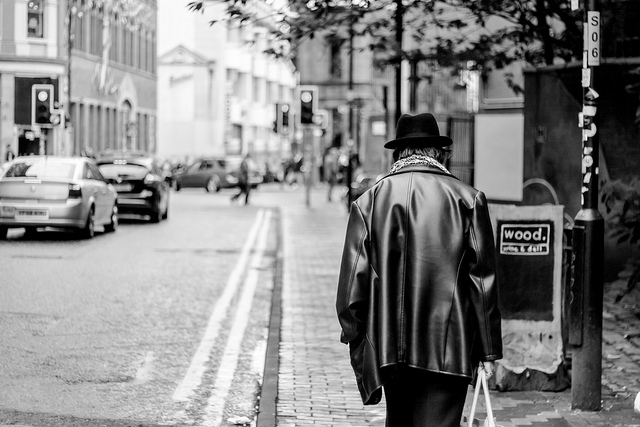
by Leather | Leather Care |
There’s nothing that compares to the high-end, elegant look of authentic leather. Purchasing real leather bags, jackets and accessories may cost a little bit more, but the additional price is well worth it in the long run. However, one of the most common problems associated with authentic leather are water stains. The porous surface naturally absorbs water from the surrounding environment. While small amounts of water and moisture can actually help to condition the leather, too much of it may cause water stains. If this is something you’re experiencing with your leather product, keep reading and we’ll reveal some simple steps for removing it. Identify The Source Of The Problem First and foremost, you’ll need to identify the area to see if it’s really water stains that are causing the problem. Depending on the severity of the stains, they should look like slightly-discolored rings on the surface of the leather. These rings can sometimes spread into full circles if the problem worsens. In any case, check your leather item thoroughly to determine exactly where the water stains are located. Don’t be afraid to open up creases and corners that are usually closed up to the point where you can’t see them. Sometimes it’s these areas that water affects most, so make sure to check them out. Saddle Soap The easiest and most effective method to remove water stains from leather is to scrub it down with a premium saddle soap. Kiwi, B & B and Moss are all excellent brands that make quality saddle soap. Pick up a can of it the next time you’re at the horse and...

by Leather | Leather Care |
Let’s face it, you can be extra careful and cautious around your leather products, but stains are bound to happen. Whether it’s from moisture, spilled drinks or using the wrong type of cleaning solution on them, chances are your leather will develop some noticeable stains. Thankfully, however, there are a couple of things you can do to help remove and eliminate stubborn leather stains. Soap and Water The first method you should try for removing leather stains involves basic warm water and soap. Take a small hand towel, wet it with warm water and place a couple of drops of mild dish soap on it. Before you apply it to your leather, squeeze out any excess water to prevent further damage to your leather products. Once you’ve done this, take the soapy towel and place it directly on the stain. Continue blotting the problematic area until the stain is no longer noticeable. Depending on how severe it is and what caused the stain, blotting should remove it without much effort. Treat it Early The key to removing leather stains is to identify and treat them early. Like most other materials, if you allow a stain to sit on the leather too long, it will seep through the fibers and become more difficult to remove. On the other hand, getting rid of fresh leather stains is usually a breeze with the soap and water method listed above. Just remember to blot the stain and not rub it in; otherwise, you could make it worse than before. Vinegar If soap and water just isn’t cutting it for your leather stains, you...

by Leather | Leather Care |
While there’s no denying the fact that leather is one of the most stylish and attractive materials on the face of Earth, it can become damage if it’s not properly maintained. Whether you own a pair of leather shoes, a belt, backpack or any other item, you need to know how to keep it protected; otherwise, you may find yourself spending more of your money and time trying to repair it. Keep reading and we’ll reveal some of the most common causes of leather damage and why you should avoid them. Sunlight While the occasional exposure to sunlight probably won’t cause any noticeable change in your leather, long-term exposure may cause it to fade over time. If you enjoy the dark, natural color of your leather, you should try to get into the habit of keeping it away from the sun. This doesn’t necessary mean you have to avoid wearing your leather boots or apparel outside, but you should avoid leaving them outside where the sun is constantly beaming down on them. In addition to fading, sunlight can also cause leather to crack and dry out to the point where it’s no longer able to be repaired. Naturally, leather holds some moisture inside of it which keeps it flexible and prevents it from cracking. When it’s exposed to sunlight for prolonged lengths of time, this moisture will evaporate from the leather, causing it to dry out and crack. Moisture As stated above, leather holds some moisture inside of it, and while this is perfectly fine, too much moisture may cause it to rot. If you happen to spill water...

by Leather | Uncategorized |
If you’ve done any shopping for leather clothing, footwear or furniture before, then you’ve probably come across a handful of different types. The feel and functionality between the different types of leather varies greatly, which is why it’s important to educate yourself on them. Here, we’ll take a look at two of the most common leathers, top-grain and full-grain, and reveal the benefits and downsides to using each of them. Before we go into what’s top-grain and what’s full-grain leather, lets first take a look at what leather is. Basically, leather is defined as the hide of any animal which has undergone the tanning process. Most of the commercial leather products you’ll find are the market use the tanned hides from cows, but it’s not uncommon to find high-end leather products made from deer and lambskin. When products call for a softer leather, deer and lambskin hide is typically used. Different types of leather have their own advantages It’s important to realize that there is no “best” type of leather. While one type might be ideal for constructing a mens jacket with, it probably wont be as effective when used for furniture. Essentially, you have to look at what purpose the leather is being used for. Full-grain leather Full-grain leather is the the most popular, and expensive, type of leather on the market. It’s made from using the traditional tanning process, but focuses on keeping the hide as close to its natural state as possible. As opposed to other types of leather, there’s no stripping of the grains or imperfections of the leather, which leaves it looking natural. When...

by Leather | Leather Care |
There’s nothing that compares to the look and comfort of genuine leather. It’s a classic, elegant material that’s unmatched in terms of aesthetics. Perhaps this is why leather jackets are still popular after all of these years. If you’re going to invest in leather, though, there are a few things you should know. Don’t Speed-Dry Leather If your leather happens to get wet, dry it slowly rather than attempting to speed-dry it. Some people automatically go for the hair dryer when they spill water on their leather garments. But using a hair dryer or other speed-drying techniques triggers certain chemical reactions within the garment, affecting its look, texture and overall quality. A better approach is to wipe the water or liquid off the surface of your leather garment and let it air dry. Don’t Leave It Outside I know this probably sounds like common sense to most people, but don’t leave your leather garments outside. Leather is sensitive to sunlight and moisture, both of which are readily available outside. The sun’s powerful UV A/B rays will penetrate through the leather, causing it to fade and even crack open. And moisture is equally as damaging, as it encourages the formation of mold and mildew, which can ruin an otherwise perfect leather garment. Do Moisturize Your Leather With a Conditioning Product If you haven’t done so already, invest in a premium leather conditioning product (sold at most leather shops). Leather needs to be moisturized on a regular basis to preserve its integrity, which is where a conditioning product comes into play: it offers just the right amount of moisture, preserving the...







Recent Comments